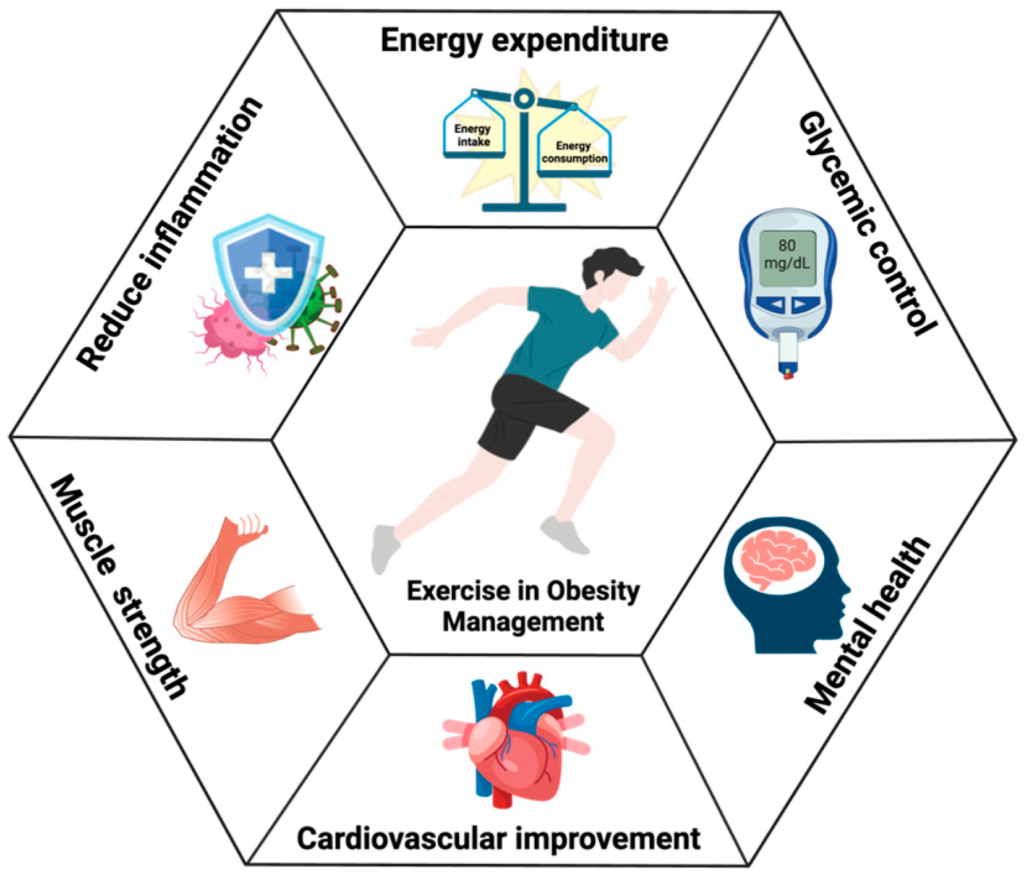
Why exercise regularly?
Obesity is a growing health concern worldwide, including in sub-Saharan Africa, where changes in lifestyle and diet have led to an increase in cases.
One of the most effective ways to prevent or manage obesity is through regular physical activity. But exercise isn’t just for the “fitness enthusiasts” – it’s a vital part of healthy living for everyone.
Let’s break down why staying active is important, and explore practical ways to incorporate it into your life.
Why is regular physical activity important?
Here are 4 important reasons why regular physical activitiy is important:
- Weight Management: Regular exercise helps burn calories and build muscle, two key factors in controlling weight. Whether you want to lose weight or maintain a healthy one, being active is essential.
- Disease Prevention: Physical activity helps reduce the risk of chronic diseases like heart disease, stroke, type 2 diabetes, and certain cancers. It also strengthens the immune system and improves overall health.
- Mental Health Boost: Exercise is not only beneficial for the body but also for the mind. It reduces stress, anxiety, and symptoms of depression, while improving mood and sleep.
- Longevity and Quality of Life: Engaging in regular physical activity can improve your quality of life, making daily tasks easier and promoting a longer, healthier life.
How much exercise do you need?
For healthy living and to prevent obesity, the World Health Organization (WHO) recommends:
- Adults should engage in at least 150 to 300 minutes of moderate-intensity aerobic activity per week (that’s 30 minutes, 5 times a week) or 75 to 150 minutes of vigorous-intensity activity.
- Children and adolescents should aim for at least 60 minutes of moderate to vigorous activity daily.
Types of physical exercise for everyone
Not everyone needs to go to the gym or do high-intensity workouts. Physical activity can be enjoyable, diverse, and adaptable to different preferences, lifestyles, and fitness levels.
Here are various types of exercises that could appeal to most community members:
- Walking
- One of the simplest and most accessible forms of exercise. A brisk walk for 30 minutes can be done around your neighborhood, in a park, or even in a shopping mall. It’s low-impact and great for beginners.
- Dancing
- Love music? Turn up your favorite tunes and dance! Dancing is a fun, high-energy workout that can be done alone, with family, or in group classes. Zumba, traditional African dance, or even freestyle can get your heart pumping.
- Cycling
- Whether it’s on a stationary bike or cycling through the streets, this is a great aerobic exercise that works the lower body and burns calories. Plus, it’s a fun way to explore your surroundings.
- Playing Sports
- Get involved in community sports like football, basketball, or volleyball. These activities not only improve fitness but are also social and enjoyable.
- Household Chores
- Cleaning the house, gardening, or washing the car can count as moderate physical activity. It’s a way to stay active while being productive at home.
- Strength Training
- You don’t need fancy equipment to build muscle. Bodyweight exercises like push-ups, squats, lunges, and planks can be done at home and help increase strength and metabolism.
- Swimming
- If you have access to a pool, swimming is a fantastic full-body workout that is easy on the joints. It’s great for individuals of all ages and fitness levels.
- Stretching and Yoga
- Flexibility exercises such as stretching and yoga improve posture, reduce stress, and can complement more vigorous activities. Yoga also helps with balance and can be practiced by anyone, regardless of fitness level.
- Climbing Stairs
- If you don’t have much time, even simple activities like taking the stairs instead of the elevator can add up throughout the day. It’s a small, yet impactful way to stay active.
- Skipping Rope
- Jumping rope is a fun, high-intensity cardio workout that can be done almost anywhere. Just a few minutes of skipping is enough to get your heart rate up and burn calories.
The many many benefits of regular exercises in fighting obesity

Tips for making physical activity a habit
- Start Small: If you’re not used to regular activity, start with just 10 minutes a day and gradually build up to the recommended duration.
- Incorporate Activity into Your Daily Routine: Walk or cycle instead of driving, take the stairs, or do short bursts of exercise during breaks.
- Do What You Enjoy: The best exercise is one that you will stick with. Choose activities you enjoy and mix them up to keep things fun.
- Get Moving with Friends or Family: Exercising with others can be motivating and enjoyable. Consider making it a group effort by going for walks or playing sports with family or friends.
- Set Goals: Track your progress and set achievable goals. This will help keep you motivated and give you a sense of accomplishment.
- Listen to Your Body: It’s important to start at your own pace and increase the intensity of your activities over time. Always listen to your body and rest if you need to.
Final thoughts: Stay active, Stay healthy
Regular physical activity is essential for maintaining a healthy weight, preventing obesity, and improving overall health. It doesn’t have to be difficult or time-consuming – with a bit of creativity, everyone can find ways to incorporate exercise into their daily life.
Whether it’s dancing, walking, playing sports, or simply moving more throughout the day, the key is consistency. So get moving, stay active, and enjoy the many benefits of a healthy, active lifestyle!


